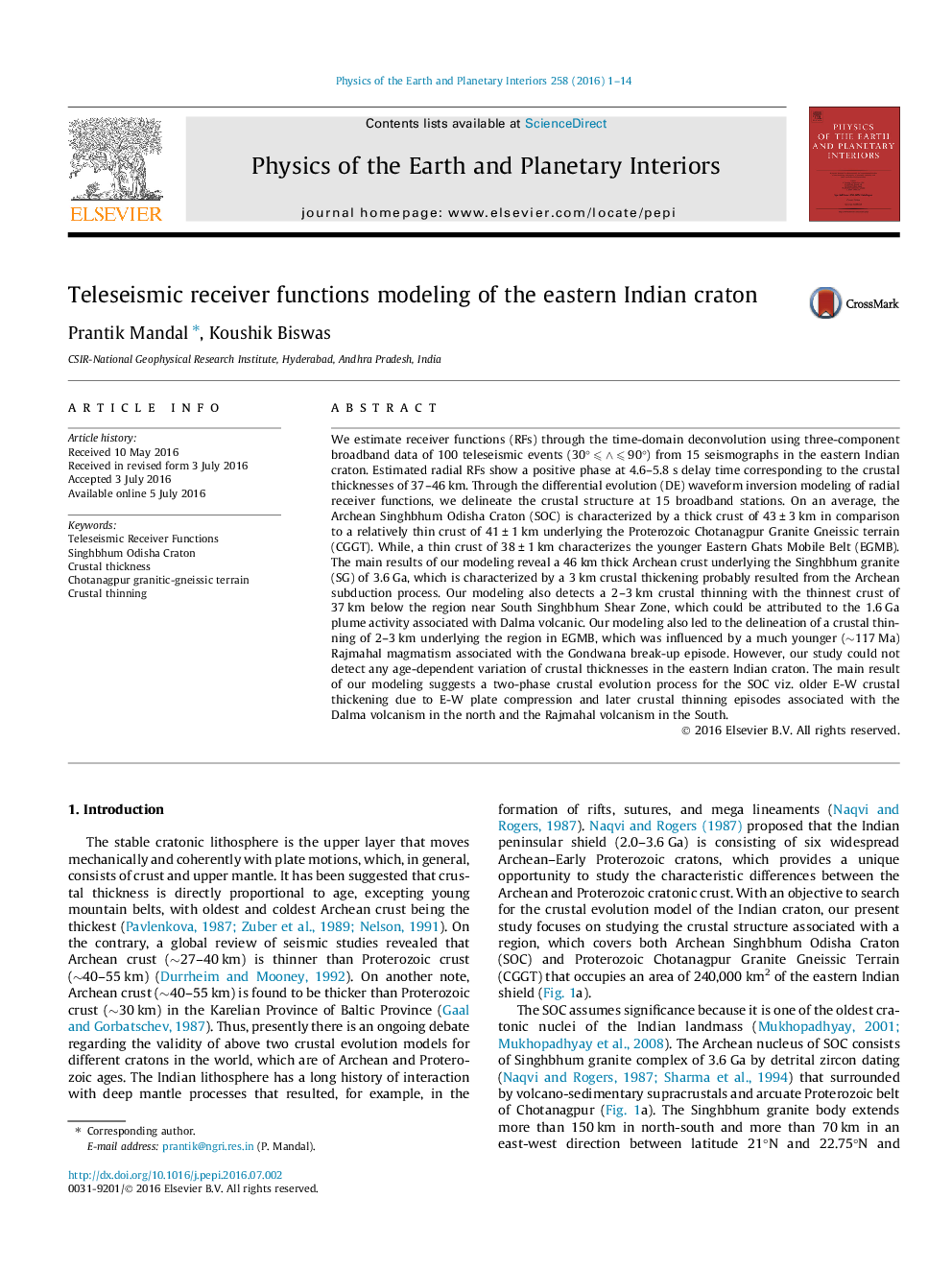| کد مقاله | کد نشریه | سال انتشار | مقاله انگلیسی | نسخه تمام متن |
|---|---|---|---|---|
| 4741330 | 1641483 | 2016 | 14 صفحه PDF | دانلود رایگان |
• Receiver function modeling at 15 broadband stations in eastern Indian shield is done.
• A relatively thicker crust of 43 ± 3 km characterizes the Archean Singhbhum craton.
• A thin crust of 38 ± 1 km characterizes the younger Eastern Ghats mobile belt.
• A stable Proterozoic cratonic crust of 41 ± 1 km is noticed underlying the CGGT.
• Our study could not detect any age dependent variation of crustal thicknesses.
We estimate receiver functions (RFs) through the time-domain deconvolution using three-component broadband data of 100 teleseismic events (30° ⩽ ∧ ⩽ 90°) from 15 seismographs in the eastern Indian craton. Estimated radial RFs show a positive phase at 4.6–5.8 s delay time corresponding to the crustal thicknesses of 37–46 km. Through the differential evolution (DE) waveform inversion modeling of radial receiver functions, we delineate the crustal structure at 15 broadband stations. On an average, the Archean Singhbhum Odisha Craton (SOC) is characterized by a thick crust of 43 ± 3 km in comparison to a relatively thin crust of 41 ± 1 km underlying the Proterozoic Chotanagpur Granite Gneissic terrain (CGGT). While, a thin crust of 38 ± 1 km characterizes the younger Eastern Ghats Mobile Belt (EGMB). The main results of our modeling reveal a 46 km thick Archean crust underlying the Singhbhum granite (SG) of 3.6 Ga, which is characterized by a 3 km crustal thickening probably resulted from the Archean subduction process. Our modeling also detects a 2–3 km crustal thinning with the thinnest crust of 37 km below the region near South Singhbhum Shear Zone, which could be attributed to the 1.6 Ga plume activity associated with Dalma volcanic. Our modeling also led to the delineation of a crustal thinning of 2–3 km underlying the region in EGMB, which was influenced by a much younger (∼117 Ma) Rajmahal magmatism associated with the Gondwana break-up episode. However, our study could not detect any age-dependent variation of crustal thicknesses in the eastern Indian craton. The main result of our modeling suggests a two-phase crustal evolution process for the SOC viz. older E-W crustal thickening due to E-W plate compression and later crustal thinning episodes associated with the Dalma volcanism in the north and the Rajmahal volcanism in the South.
Journal: Physics of the Earth and Planetary Interiors - Volume 258, September 2016, Pages 1–14
